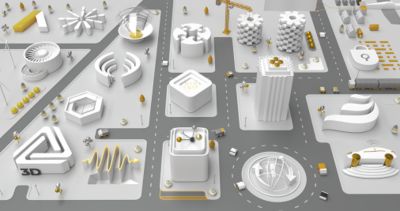2022
Presentation
Key Challenges of Electric Powertrain Development
Designing todays and future electric vehicles requires an optimum tradeoff between electric powertrain efficiency, drive performance, battery capacity, as well as managing component vendor aspects, cost, etc.
Ansys provides a powertrain system simulation platform, automated to leverage the enormous potential for improvement found by analyzing the interactions of the key components within the electric powertrain – battery and its management system, inverter-motor-gearbox, mechanics, and control systems. This holistic approach enables effective cross-disciplinary collaboration by Daimler engineers to master the complex art of electric powertrain system design. Main contributors to performance gain and losses can be clearly identified.
Fractions of a per cent efficiency gains can decide whether you have enough energy left to reach your target or not, as well as availability of acceleration performance critical to winning or losing a Formular-E race. Slight weight changes can affect cooling efficiency relating to premature thermal derating or thermal failure. Small adjustments to the battery management and control settings allow adapting the powertrain performance to specific driving modes, conditions, etc.
Clearly, optimizing the powertrain virtually under such tight conditions requires very accurate component models, achievable through multidisciplinary numeric field simulation. The optimum powertrain is not defined or equivalent to the sum of all the optimized components. To find the optimum combination of components and their settings, hundreds of thousands of variants need to be analyzed. Ansys provides a high-performance simulation solution for powertrain system analysis, using its outstanding capabilities for generating Reduced Order Models (ROM) from highly detailed field simulation models of the powertrain components.
Powerful Response Surface Techniques ensure that only the relevant and necessary number of variants are analyzed, guaranteeing the quality of the results to obtain a Model of Optimal Prognosis (MoP). This MoP will then serve for fast and accurate sensitivity analyses leading to best pareto-type optimization results. In addition to designing the powertrain, such a workflow can also serve for hardware component and software module validation to ensure continuous integration and virtual testing against the powertrain model, thus saving effort and costs by reducing real-world testing.











